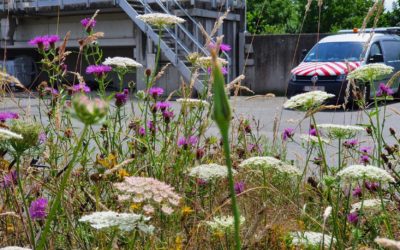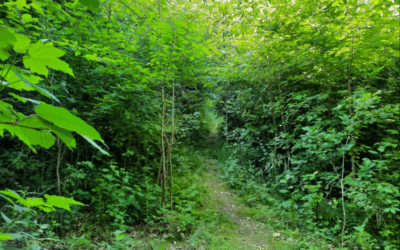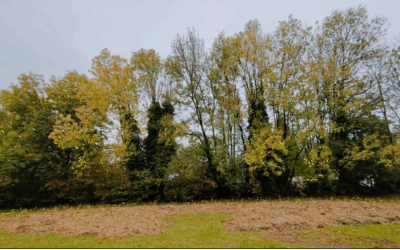Local approach to biodiversity at Aquafin’s wastewater treatment plant sites.
Living cemetery in Eupen
The project
The cemetery in Eupen, located in the city centre and surrounded by trees, plays an important role in the city’s climate and as a habitat for plants and animals. For several years now, the number of vacant graves, which are usually covered with gravel (see the ‘before’ picture to the right), has been increasing. In line with the motto ‘More life in the cemetery and more green instead of grey’, a pilot project was launched in autumn 2022 with the support of the Walloon Region’s ‘Biodivercité’ programme at various locations in the cemetery to enhance the green and cooling, park-like character of the Eupen cemetery. The initial question was: how can vacant graves be designed in a nature- and climate-friendly way without requiring a lot of maintenance throughout the year?
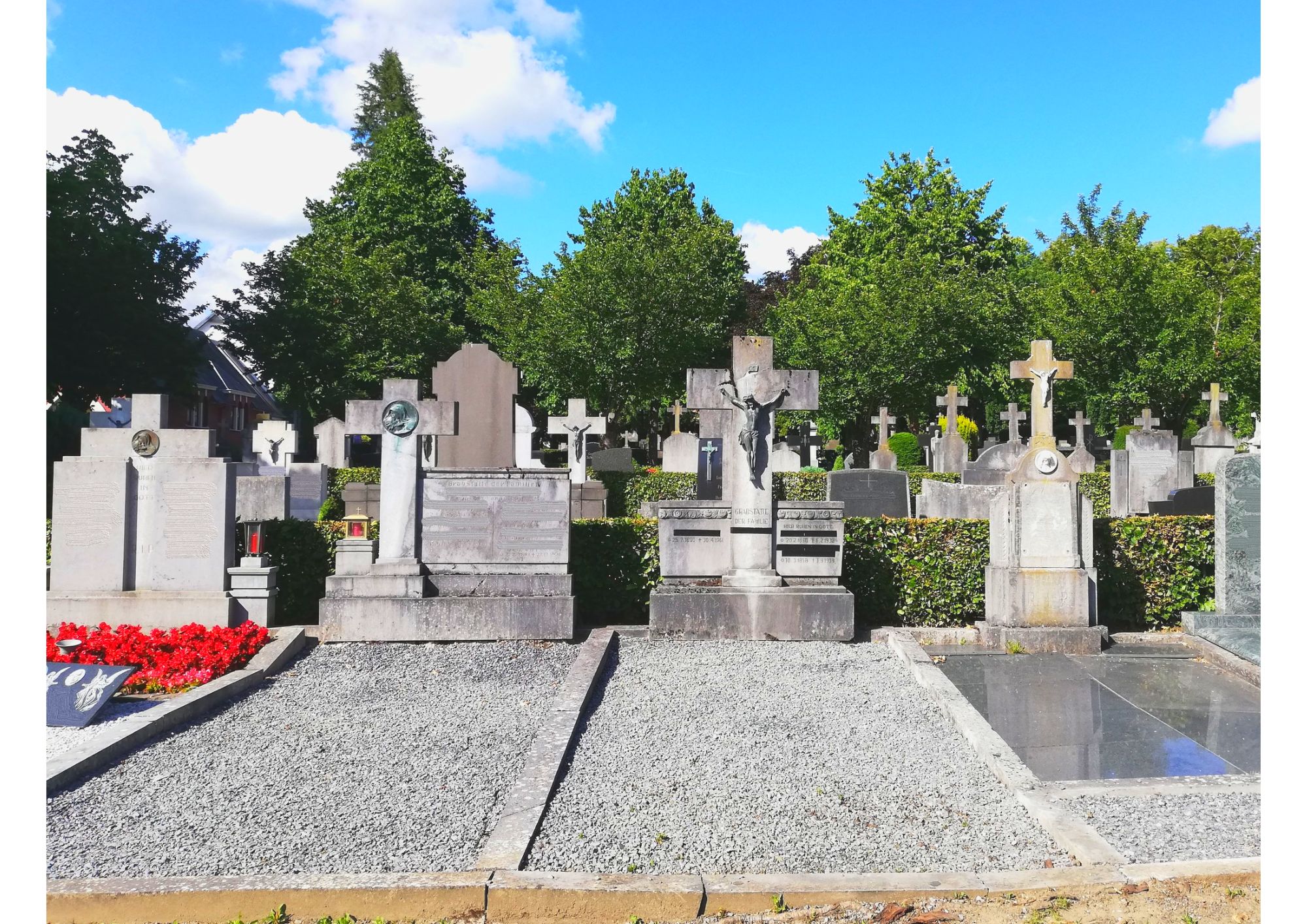
Project location
Contribution(s)
Project costs
Participant(s)
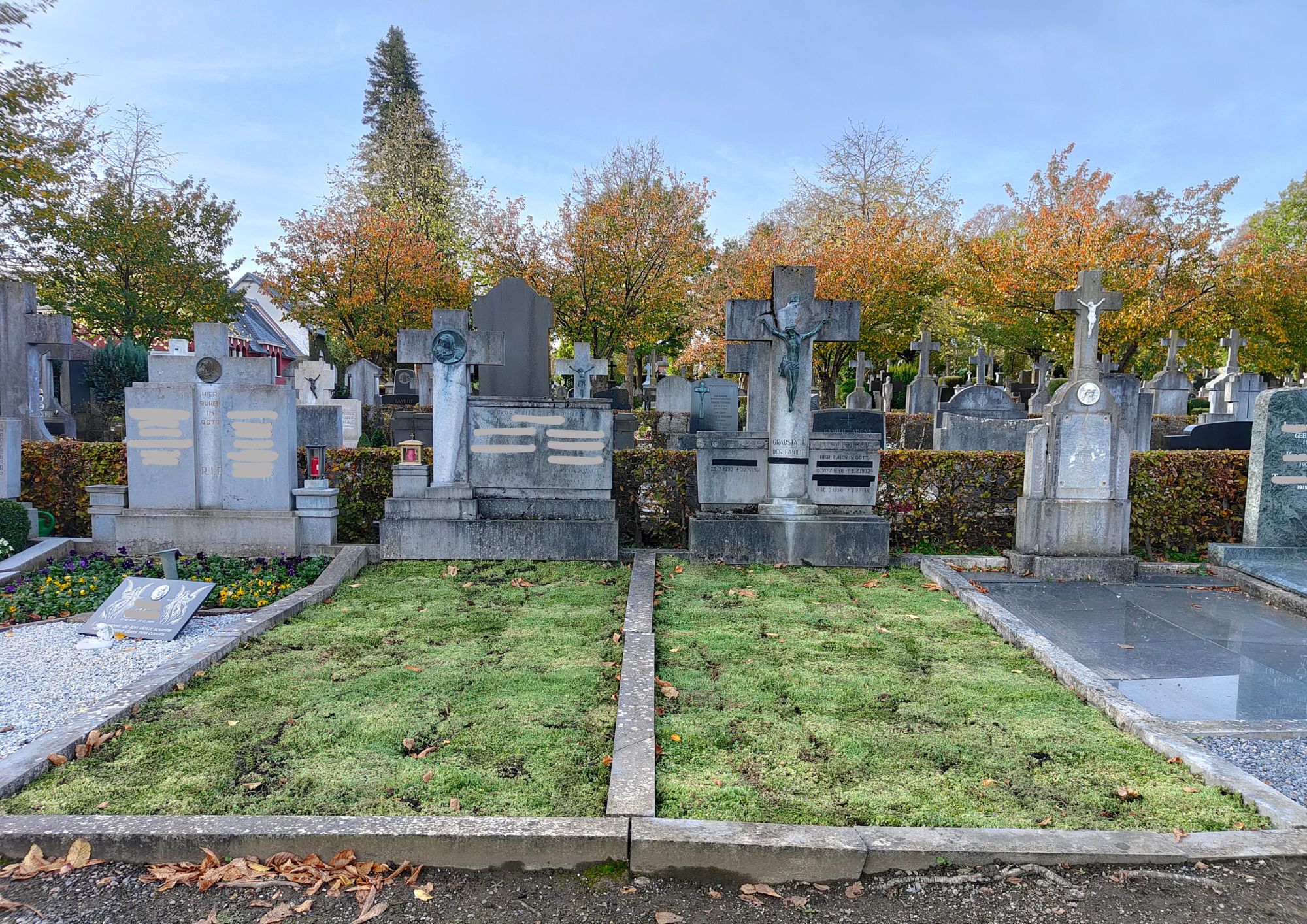
The pilot project was carried out as part of the ‘BiodiverCité’ programme with financial support from the Walloon Region. Following the success of the pilot project, a second phase was implemented using the city’s own funds.
How are the criteria of the objective met?
Urban and peri-urban areas
- Respect and/or improve the specific ecological characteristics of the area (e.g. the topography, the type of landscape, the local plant and animal life);
- Set up a biodiversity-friendly management system (e.g. rewilding, reduced mowing of parks, gardens, talus, ponds, no chemicals);
- As much naturalness as possible/as little alteration as possible of the initial landscape (landscape, quality of water, of soil, …);
- Incorporate the developments into the surrounding area and environment;
- Use native species/subspecies that are more resilient and resistant to climate change, if appropriate.
Possible initiatives in which the project is involved :
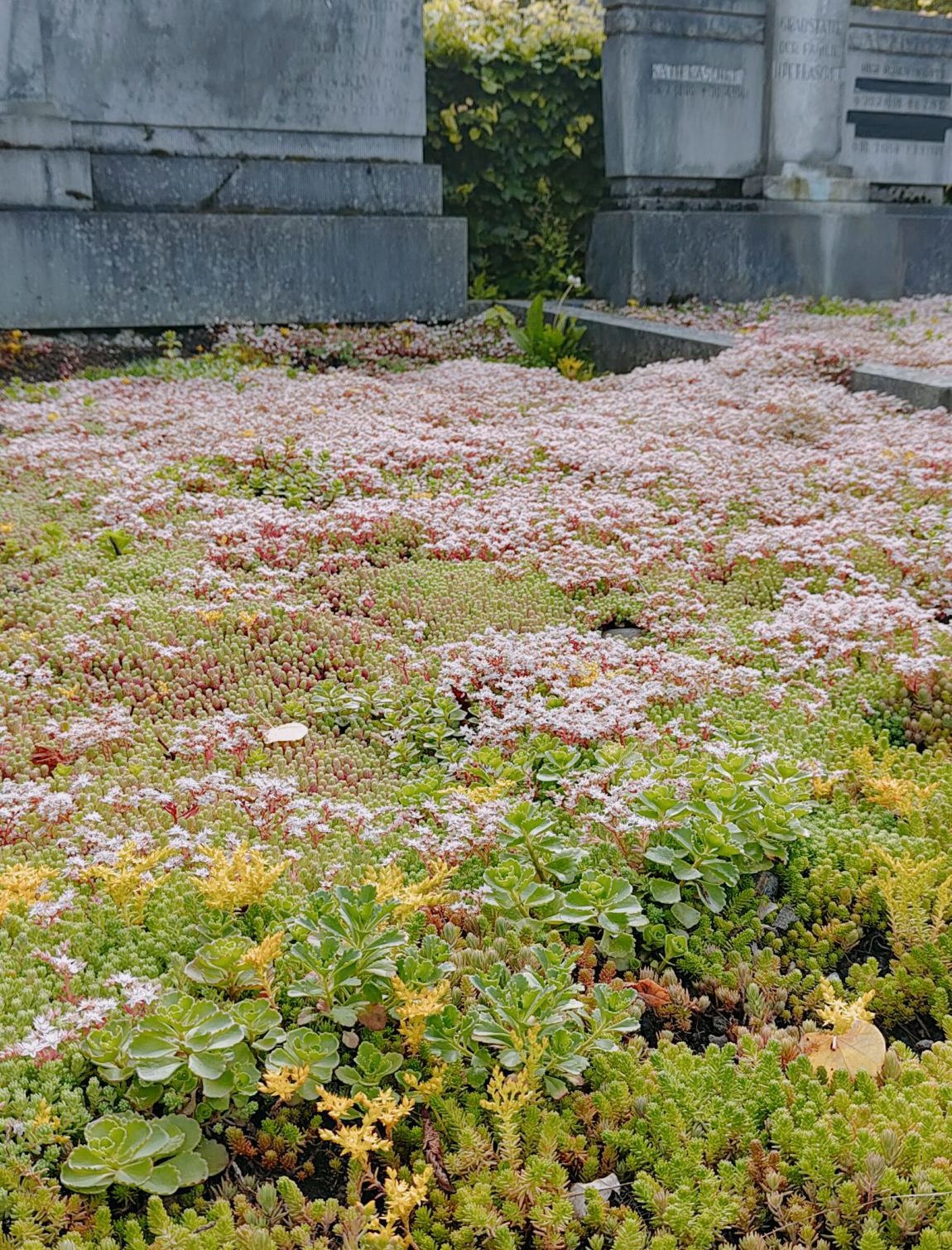
Long-term maintenance
The cemetery service employees of the city of Eupen maintain the cemetery. Since the sedum mats are easy to care for, they only need to remove unwanted growth, such as tree seedlings, once or twice a year and rake up fallen leaves in autumn (just like on the gravel areas). Watering is not necessary throughout the year.
Benefits
This project led to:
- Creation and enhancement of inner-city habitats for insects and small mammals;
- Cooling effects for the microclimate of the city centre;
- Enhancement of the quality of life in the cemetery as an inner-city green space;
- Imitation effects, as citizens have transferred the concept of ‘low-maintenance greenery instead of grey’ to their own family gravesites and their home gardens.
Other projects linked to the objective: "Urban and peri-urban areas"
Micro-forests
UrbanForests specialises in creating participatory micro-forests that are 100% natural and based on the Miyawaki method.
Mini forest in Josephine Koch Park
1 day, 900 trees & many hands for greater biodiversity & climate protection.
